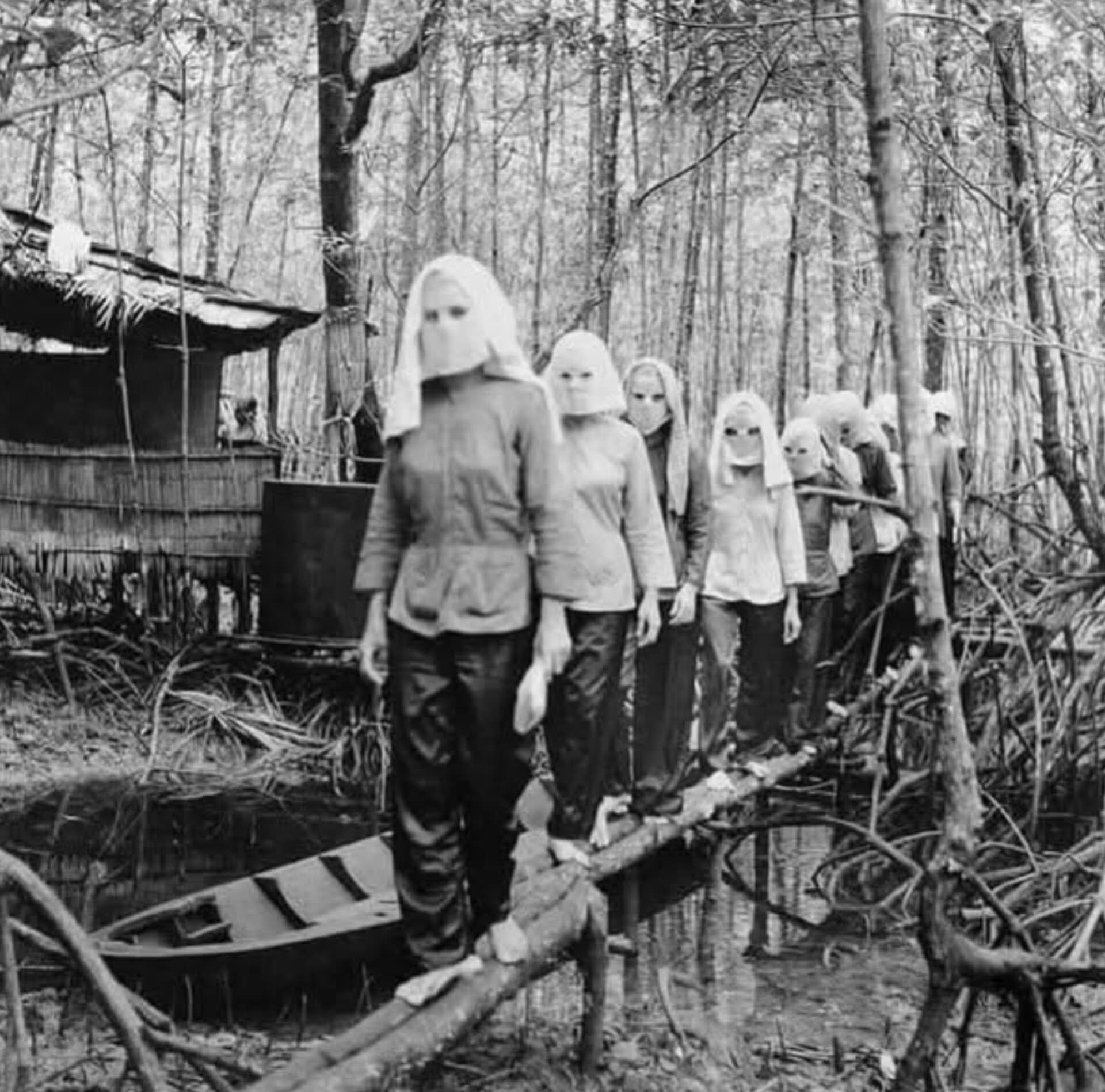In 1972, deep within Namkang Forest, a haunting photograph captured a group of guerrillas crossing a swamp on a narrow log, their faces hidden behind plain white veils. These women did not wear military uniforms or carry signs of rank—their veils erased individual identity, ensuring that if captured, they could not betray one another under torture. What might look like a simple piece of cloth was, in truth, both a shield and a vow of loyalty.
Women played an extraordinary role in the Vietnam War, often overlooked in official accounts. They not only fought in combat but also carried messages, tended to the wounded, and organized life within the jungle. Many came from rural villages, trading farming tools for rifles, their determination unshaken by bombings or the threat of death. In their anonymity, they embodied both resilience and sacrifice, standing as silent symbols of a people’s struggle for survival and independence.
This photograph, therefore, is more than just a record of wartime movement. It is a testimony to courage, solidarity, and the quiet strength of women who chose to conceal their identities for the sake of others. Beneath each veil was a personal story—a mother, a daughter, a sister—walking toward an uncertain future with unwavering conviction. In the shadows of war, anonymity became an act of love, and veiled silence a defiant expression of courage.
In 1972, deep in Namkang Forest, a striking photograph showed a group of guerrillas making their way across a swamp on a narrow log, their faces covered with plain white veils. These women wore no military uniforms and bore no marks of rank. The veils erased their individuality, protecting them in case of capture, so none could be forced to betray the others. What seemed like a simple cloth was in fact both protection and a pledge of loyalty.
Women held a remarkable place in the Vietnam War, though their role is often left out of official histories. They fought in battles, carried vital messages, treated the wounded, and helped sustain life in the jungle. Many came from farming villages, exchanging tools of harvest for weapons of resistance, their resolve unbroken by bombings or the constant risk of death. In their hidden faces they carried the weight of resilience and sacrifice, silent figures of a nation’s fight for survival and freedom.
The photograph is not just a record of movement through war. It stands as evidence of courage, solidarity, and the quiet power of women who chose to mask their identities for the sake of others. Behind each veil was an individual life, a mother, a daughter, a sister, walking toward an uncertain destiny with unshaken conviction. In the silence of war, anonymity became love in action, and veiled faces became symbols of unyielding courage.

